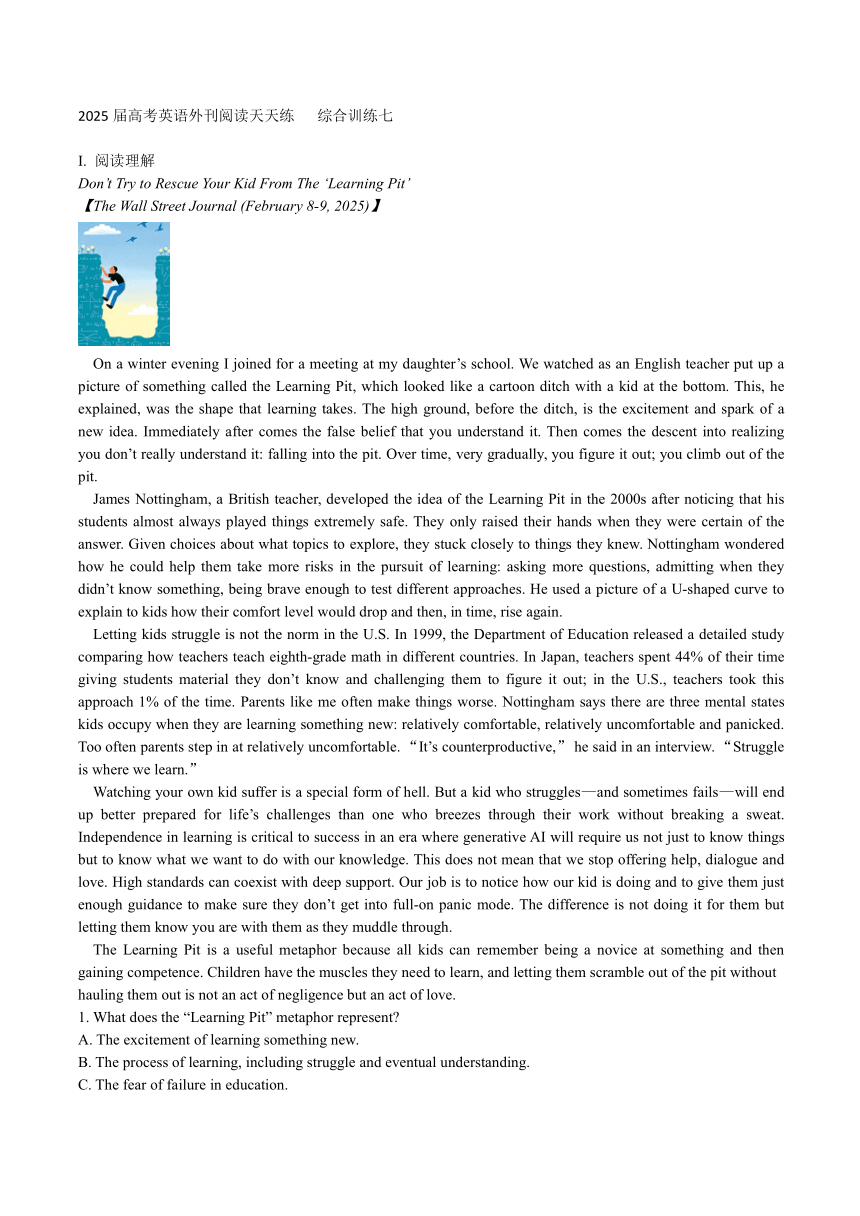
2025届高考英语外刊阅读天天练 综合训练七 阅读理解 Don’t Try to Rescue Your Kid From The ‘Learning Pit’ 【The Wall Street Journal (February 8-9, 2025)】 On a winter evening I joined for a meeting at my daughter’s school. We watched as an English teacher put up a picture of something called the Learning Pit, which looked like a cartoon ditch with a kid at the bottom. This, he explained, was the shape that learning takes. The high ground, before the ditch, is the excitement and spark of a new idea. Immediately after comes the false belief that you understand it. Then comes the descent into realizing you don’t really understand it: falling into the pit. Over time, very gradually, you figure it out; you climb out of the pit. James Nottingham, a British teacher, developed the idea of the Learning Pit in the 2000s after noticing that his students almost always played things extremely safe. They only raised their hands when they were certain of the answer. Given choices about what topics to explore, they stuck closely to things they knew. Nottingham wondered how he could help them take more risks in the pursuit of learning: asking more questions, admitting when they didn’t know something, being brave enough to test different approaches. He used a picture of a U-shaped curve to explain to kids how their comfort level would drop and then, in time, rise again. Letting kids struggle is not the norm in the U.S. In 1999, the Department of Education released a detailed study comparing how teachers teach eighth-grade math in different countries. In Japan, teachers spent 44% of their time giving students material they don’t know and challenging them to figure it out; in the U.S., teachers took this approach 1% of the time. Parents like me often make things worse. Nottingham says there are three mental states kids occupy when they are learning something new: relatively comfortable, relatively uncomfortable and panicked. Too often parents step in at relatively uncomfortable. “It’s counterproductive,” he said in an interview. “Struggle is where we learn.” Watching your own kid suffer is a special form of hell. But a kid who struggles—and sometimes fails—will end up better prepared for life’s challenges than one who breezes through their work without breaking a sweat. Independence in learning is critical to success in an era where generative AI will require us not just to know things but to know what we want to do with our knowledge. This does not mean that we stop offering help, dialogue and love. High standards can coexist with deep support. Our job is to notice how our kid is doing and to give them just enough guidance to make sure they don’t get into full-on panic mode. The difference is not doing it for them but letting them know you are with them as they muddle through. The Learning Pit is a useful metaphor because all kids can remember being a novice at something and then gaining competence. Children have the muscles they need to learn, and lett ... ...
~~ 您好,已阅读到文档的结尾了 ~~

